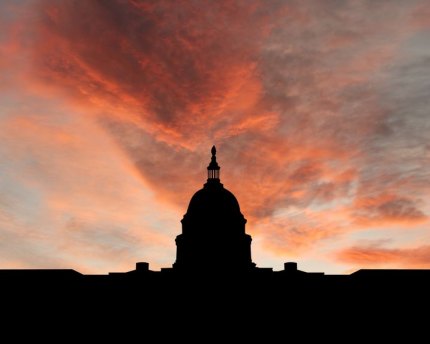In history: The U.S. Capitol's stormy past

As Trump's supporters stormed the U.S. Capitol, one woman suffered a fatal gunshot wound; three others died after having medical emergencies. The next day, U.S. Capitol Police officer Brian Sicknick died. A department statement explained that he was "responding to the riots on Wednesday, January 6, 2021, at the U.S. Capitol and was injured while physically engaging with protesters. He returned to his division office and collapsed. He was taken to a local hospital where he succumbed to his injuries."
But that wasn't all. More than 100 officers were hurt, according to PolitiFact, a website of the Poynter Institute. And two officers who were at the scene later committed suicide.
Without question, it was gruesome. But it wasn't the only time violence erupted at the seat of democracy. Here are six examples:
Aug. 24, 1814: Two years into the War of 1812, British troops set fire to the U.S. Capitol, among other federal buildings. It was retaliatory: Americans had burned the Canadian capital at York -- Toronto -- in colonial Canada the year before. (See the article on the website for the Architect of the Capitol.)
May 22, 1856: Two South Carolina politicians, Rep. Preston Brooks and Rep. Laurence Keitt, beat Sen. Charles Sumner of Massachusetts with a cane in the Senate chamber. The attack was a response to a speech in which Sumner "attacked the institution of slavery and pro-slavery senators such as Andrew Butler of South Carolina." Butler was a relative of Brooks, according to the U.S. House of Representatives' History, Art and Archives website.
Sumner was so seriously injured that it took three years to recuperate. Attempts were made to discipline the two Southern politicians. "The House failed to garner the necessary two-thirds vote to expel Brooks," the website explained, "but it successfully censured Keitt." The two resigned in protest.
Muenter then traveled to New York and shot the financier J.P. Morgan, whose company was Great Britain's "principal U.S. purchasing agent for munitions and other war supplies," the Senate website explains. Morgan recovered. But Muenter was arrested and committed suicide while behind bars.
March 1, 1954: Four Puerto Rican Americans fired guns in the House of Representatives, injuring five congressmen, according to the website for the Library of Congress.The attackers fired at random from the spectators' galleries, shouting, “Viva Puerto Rico libre!”—“Long live free Puerto Rico!”
"Congressional pages carried the wounded to safety. As the shooters attempted to escape, three of them were overpowered by visitors, police, house staff, and Congressman James Van Zandt of Pennsylvania," who personally apprehended one of the gunmen. The fourth shooter escaped, but was captured later that day, the library website recounts. The most critically wounded was Alvin Bentley of Michigan, who recovered and returned to his congressional duties nearly two months later, according to the University of Michigan website.
March 1, 1971: Nearly two decades later on the same day, the Weather Underground, a militant group of young, white Americans that grew out of the anti-Vietnam War movement, placed two bombs in the Capitol, according to Encyclopedia Britannica. The explosions caused extensive damage but no injuries, The New York Times recounts.
A group calling itself the Armed Resistance Unit took credit for the bombing, saying it was in retaliation for U.S. military involvement in Grenada and Lebanon. The building sustained $250,000 in damages. A painting of Daniel Webster was damaged but later restored.
- Resources:
- Architect of the Capitol: A Most Magnificent Ruin: The Burning of the Capitol during the War of 1812, by the Architect of the Capitol curator, Aug. 22, 2012.
- Encyclopedia Britannica: Weather Underground, American militant group, by Laura Lambert.
- The New York Times: Bomb in Capitol Causes Wide Damage, by John W. Finney, March 2, 1971.
- University of Michigan, Bentley Historical Library: Alvin M. Bentley papers: 1935-1969 (bulk 1950-1968)
- U.S. House of Representatives' History, Art and Archives website: South Carolina Representative Preston Brooks’s Attack on Senator Charles Sumner of Massachusetts, May 22, 1856.
- U.S. Library of Congress: 1954 Shooting at the U.S. Capitol, by Heather Thomas, May 19, 2020.
- U.S. Senate website: Bomb rocks Capitol, July 2, 1915.
- U.S. Senate website: Bomb explodes in Capitol, Nov. 7, 1983.
Related:

